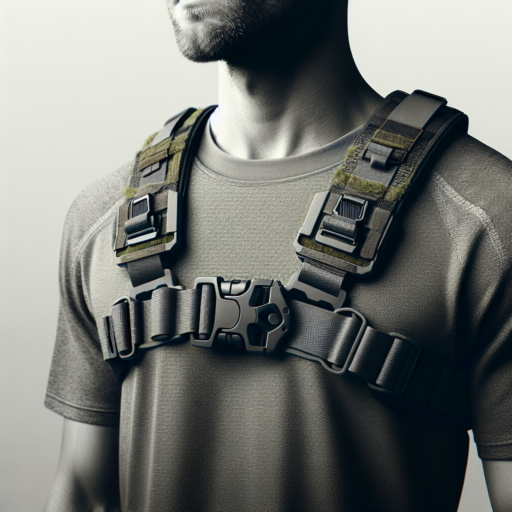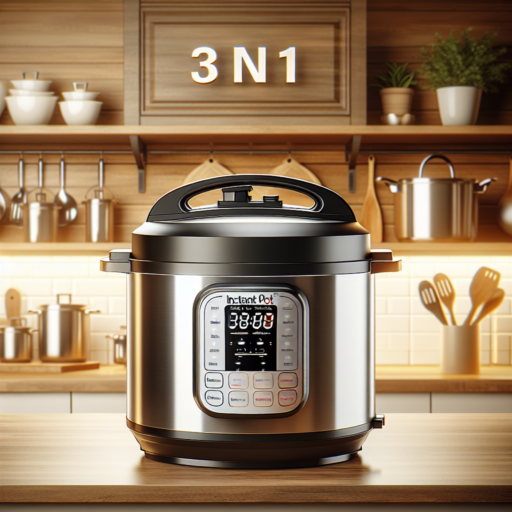What Is a Chest Strap and How Does It Work?
A chest strap, often an integral tool in the world of sports and fitness tracking, serves primarily to monitor heart rate accurately. Unlike wrist-worn devices, a chest strap is worn around the chest, just below the breastplate. It has a small, lightweight monitor that attaches to a flexible, elastic band. This positioning allows it to detect heartbeats more directly and, therefore, provide more accurate readings than its wrist-worn counterparts. Through the use of electrical signals, the chest strap captures every heartbeat, translating this data into readable output for the user.
The working mechanism behind a chest strap is both sophisticated and straightforward. When the heart beats, it sends out electrical impulses. These impulses are detected by the sensors embedded in the fabric of the chest strap. The detected signals are then transmitted, typically via Bluetooth or ANT+, to a linked device such as a smartphone, smartwatch, or a dedicated fitness tracker. This process enables real-time heart rate monitoring, which can be crucial for optimizing workouts, tracking fitness progress, and even for medical monitoring in some cases.
Furthermore, the precision of a chest strap in measuring heart rate makes it a favorite among athletes and fitness enthusiasts. By providing instant feedback on the body’s response to various exercise intensities, users can adjust their efforts to remain within target heart rate zones. This capability not only enhances the effectiveness of workouts but also minimizes the risk of overexertion, making chest straps an invaluable tool for anyone serious about their health and fitness goals.
The Top 5 Benefits of Using a Chest Strap
Using a chest strap, often associated with heart rate monitoring during exercise, brings several advantages to the fitness enthusiast or anyone interested in maintaining an optimal health regime. These benefits span from accuracy in data collection to enhanced comfort during workouts, making them an indispensable tool for achieving fitness goals.
Improved Accuracy in Heart Rate Monitoring
Precision in tracking heart rate is crucial for anyone looking to optimize their workout routines. Chest straps excel in providing accurate and continuous heart rate data, allowing for a more tailored and efficient exercise plan. Unlike wrist-based monitors, chest straps maintain close contact with the skin, minimizing discrepancies and offering real-time feedback that is crucial for performance adjustments on the go.
Enhanced Comfort and Versatility
When it comes to comfort and ease of use, chest straps are designed to be lightweight and adaptable to various body types. This ensures minimal interference during exercise, allowing the wearer to focus solely on their workout. Their versatility extends to compatibility with a variety of devices, offering users the freedom to sync data with their preferred fitness apps and gadgets, further enriching the training experience.
Effective Training Within Target Heart Rate Zones
Training within specific heart rate zones is fundamental for achieving desired fitness outcomes, whether that be fat burning, endurance improvement, or cardiovascular health. Chest straps enable exercisers to maintain their effort within these precise zones, maximizing workout efficiency. By offering real-time alerts when the wearer falls below or exceeds their target heart rate, chest straps act as a personal coach, guiding users towards their fitness objectives with unparalleled accuracy.
Choosing the Right Chest Strap for Your Needs
When it comes to selecting the perfect chest strap, understanding your specific needs is crucial. Whether it’s for heart rate monitoring during rigorous exercise, or ensuring a snug fit for a wearable camera during an adventure, the primary use case of your chest strap will dictate the features you should look for. As chest straps serve different purposes, from health monitoring to sport activity tracking, identifying your primary usage can significantly narrow down your options.
Comfort and Adjustability are paramount when choosing a chest strap. A strap that offers easy adjustment can accommodate various body sizes and shapes, ensuring it remains securely in place without causing discomfort over extended periods of use. Furthermore, the material of the chest strap plays a significant role in comfort. Breathable, soft fabrics can prevent skin irritation and provide a more pleasant wearing experience, especially during intense activities.
Another essential aspect to consider is the Compatibility and Connectivity of the chest strap with other devices. In today’s technology-driven world, opting for a chest strap that seamlessly syncs with your smartphone, smartwatch, or fitness app can enhance your tracking capabilities and allow for a more integrated, comprehensive understanding of your health or performance data. Therefore, it’s beneficial to check the connectivity options—such as Bluetooth or ANT+ compatibility—before making a final decision.
How to Properly Wear and Adjust Your Chest Strap
Wearing a chest strap properly is crucial for obtaining accurate heart rate data during physical activities. A properly adjusted chest strap not only ensures comfort but also enhances the accuracy of the data transmitted to your monitoring device. Whether you’re a professional athlete or a fitness enthusiast, understanding the nuances of wearing your chest strap correctly can significantly impact your training effectiveness.
To start, position the chest strap just below the chest muscle. The placement is essential; too high, and you may restrict your breathing, too low, and you might not get accurate readings. The strap should be snug but not constricting, allowing you to breathe freely and move without restriction. Remember, the fit may vary slightly based on the design of the strap and your body type. Adjusting the strap while standing in a natural posture will give you the best reference for a comfortable fit.
Maintenance and care of the chest strap are also key to ensuring ongoing accuracy and comfort. After each use, it’s recommended to rinse the strap under cold water and let it air dry. For a deeper clean, follow the manufacturer’s instructions, which may suggest using mild soap or a specific cleaning solution. This prevents the build-up of sweat and bacteria, which could interfere with the strap’s sensors and affect its elasticity over time. Keeping the strap clean also reduces the risk of skin irritation with regular use.
Lastly, regularly check the strap for signs of wear and tear. Any visible damage, such as frays or tears, can impact the fit and function of the chest strap. If you notice any damage, it’s best to replace the strap to maintain the integrity of your heart rate data and ensure continuous comfort and safety during your workouts.
No se han encontrado productos.
Chest Strap vs. Wrist Heart Rate Monitors: Which Is Better?
When comparing chest strap and wrist heart rate monitors, it’s important to consider accuracy and comfort, two key factors that will likely influence your choice. Chest strap monitors have been hailed for their precision. They closely monitor the heart’s electrical activity, similar to an EKG, which can provide users with a more exact heart rate reading. This is particularly advantageous for athletes or individuals engaged in high-intensity workouts who require precise data to optimize their performance and recovery.
On the other hand, wrist heart rate monitors are celebrated for their convenience and ease of use. These devices, which measure blood flow using optical sensors, are incorporated into many smartwatches and fitness trackers, making them an attractive option for those looking to monitor their heart rate alongside other health metrics without wearing additional gear. Despite their comfort and convenience, it’s noted that wrist monitors can sometimes be less accurate, especially during intense exercise or if the device is not worn properly.
Both types of devices have their place in the fitness world, depending on the user’s priorities. The chest strap’s accuracy is unbeatable for professional athletes and fitness enthusiasts who rely on meticulous data, while the wrist heart rate monitor’s wearability and versatility make it a go-to for everyday fitness tracking and overall wellness monitoring.
Common Mistakes to Avoid When Using a Chest Strap
Sure, here is the content focusing on the H2 topic, incorporating HTML elements for better SEO optimization:
When it comes to monitoring heart rate, chest straps are a favored choice for athletes and fitness enthusiasts alike. However, even the most seasoned users can fall prey to certain pitfalls that diminish the accuracy and comfort of these devices. Recognizing and avoiding these common mistakes can significantly enhance your workout experience and the reliability of the data collected.
Ignoring Proper Placement
The effectiveness of a chest strap largely depends on its position. A common mistake is wearing it too high or too low on the torso. Ideally, the strap should sit just below the chest muscles, in line with the heart. Ensuring the correct placement is crucial for accurate heart rate readings. Additionally, make sure the sensor part of the strap is directly touching your skin to avoid discrepancies in data collection.
Overlooking Strap Hygiene
Maintenance often takes a backseat when it comes to fitness equipment. For chest straps, neglecting cleanliness can not only lead to skin irritations but also impact the strap’s longevity and sensor accuracy. Sweat and dirt can build up on the strap, especially along the sensor area, causing it to malfunction or produce erroneous readings. Regular washing according to the manufacturer’s instructions is essential to keep it in prime condition.
Another aspect frequently overlooked is the fit of the chest strap. Wearing it too tight can restrict breathing and movement, while a loose fit might cause it to slip or result in inaccurate heart rate monitoring. Finding that sweet spot where the strap is snug, yet comfortable, is key to its effective use. Remember, the goal is to ensure the strap stays in place throughout your entire workout without causing any discomfort.
Maintenance and Care Tips for Your Chest Strap
Keeping your chest strap in top condition is essential for ensuring accurate readings and prolonging its lifespan. By adhering to a few maintenance and care tips, you can optimize its performance and ensure it remains a reliable part of your fitness routine. Proper care involves routine cleaning, storage, and periodic checks for wear and tear.
Regular Cleaning Routine
One of the most critical steps in maintaining your chest strap is establishing a regular cleaning routine. After each use, it’s advisable to wipe down the strap with a mild soap solution and a soft cloth to remove sweat and bacteria. Ensure the sensor area receives special attention but avoid abrasive materials or harsh chemicals that could damage it. For a deeper clean, remove the sensor (if detachable) and hand wash the fabric strap in warm water, laying it flat to dry away from direct sunlight.
Proper Storage Techniques
When not in use, storing your chest strap correctly is paramount to preserving its shape and functionality. Store the strap in a cool, dry place away from any direct heat sources, such as radiators or sunlight, which could degrade the material. To avoid stretching or deforming the elastic band, do not hang the strap; instead, loosely fold it and place it in a drawer or a dedicated storage box. Keeping the sensor attached or nearby can help prevent loss and ensure you’re always ready for your next workout.
Apart from cleaning and storage, periodically inspect your chest strap for signs of wear and tear. Look for any fraying on the strap or cracks on the sensor unit, which could compromise its functionality. Replacing worn parts promptly can prevent interruptions in your fitness tracking and maintain the accuracy of the data collected. By following these simple maintenance and care tips, your chest strap will continue to be an accurate and dependable tool in your fitness arsenal.
Top Brands and Models of Chest Straps in 2023
As wearables continue to dominate the fitness and outdoor market, understanding the top brands and models of chest straps in 2023 is essential for those looking to track their heart rate, improve sports performance, and monitor health metrics with precision and comfort. Chest straps have been recognized for their accuracy and reliability, making them a favored choice among athletes and fitness enthusiasts alike.
Garmin HRM-Dual
Garmin has long been a leader in the world of fitness gadgets, and the HRM-Dual stands out as a testament to their commitment to quality. Known for its exceptional battery life and advanced heart rate monitoring technology, this model seamlessly integrates with a wide range of devices, ensuring users have the flexibility they need to track their workouts across multiple platforms.
Polar H10
When it comes to precision and connectivity, the Polar H10 sets the bar high. Celebrated for its accuracy, this chest strap provides detailed data that fitness enthusiasts can rely on for optimizing their training regimes. Its compatibility with various fitness apps and devices makes it a versatile tool for anyone serious about tracking their heart rate data.
Wahoo TICKR X
The Wahoo TICKR X is renowned for its dual-band technology and storage capacity, allowing users to track heart rate, calorie burn, and workout duration without being tethered to a phone or smartwatch. This model is designed for the tech-savvy athlete who values the integration of advanced features with their training equipment.
User Reviews: What People Are Saying About the Latest Chest Straps
The world of fitness is always evolving, and with it, the tools and accessories designed to boost your workout efficiency. Among the latest innovations, chest straps have been garnering significant attention. User reviews offer invaluable insights into how these latest gadgets are being received by the fitness community. Here’s what people are saying about the newest chest straps on the market.
Many users have noted the enhanced comfort and accuracy of the latest models. The evolution in design and material has not gone unnoticed, with numerous reviewers highlighting the reduced chafing and increased durability of these straps. The seamless integration with smartphone apps and sports watches is also frequently praised, allowing for more precise monitoring of heart rate and fitness metrics. This aspect is particularly appreciated by users who rely on accurate data to optimize their training sessions.
Feedback on battery life and connectivity has been overwhelmingly positive. The extended battery life, often exceeding previous generations, ensures that users can rely on their chest straps for multiple workouts without the need for frequent recharging. Furthermore, the improved Bluetooth connectivity has eliminated the frustration of intermittent data transmission, creating a smoother user experience. Through user reviews, it’s clear that the latest chest straps are not only more reliable but also offer a level of convenience that aligns with the demands of modern fitness enthusiasts.
FAQs About Chest Straps: Everything You Need to Know
What are Chest Straps Used For?
Chest straps, commonly utilized in fitness and heart rate monitoring, serve a dual purpose. Primarily, they are designed to provide accurate heart rate measurements during various forms of exercise. Unlike wrist-worn devices, chest straps offer a direct measurement from the heart, offering unparalleled accuracy. Additionally, they play a crucial role in maintaining the correct posture and support during high-intensity workouts, ensuring safety and enhancing performance.
How Do Chest Straps Measure Heart Rate?
The technology behind chest straps is fascinating. These devices use electrical signals to detect the heart’s activity. When the heart beats, it sends an electrical signal through the body, which the chest strap detects and converts into a heart rate reading. This method, known as electrocardiography (ECG), is why chest straps are celebrated for their precision in heart rate monitoring.
Are Chest Straps Comfortable to Wear?
Modern chest straps are designed with comfort in mind. Most models are made from soft, flexible materials that fit snugly around the chest without causing irritation or restricting movement. Furthermore, many are adjustable and feature a lightweight design, ensuring they can be worn for extended periods without discomfort. Despite initial skepticism, users often report that they forget they’re wearing a chest strap during exercise due to its non-intrusive nature.




